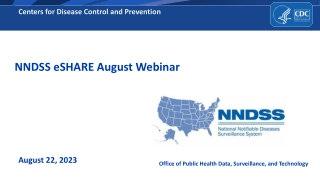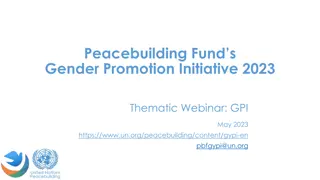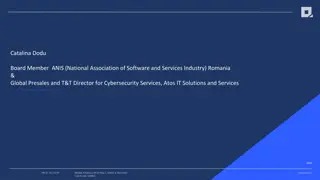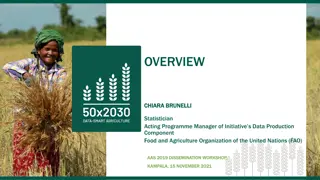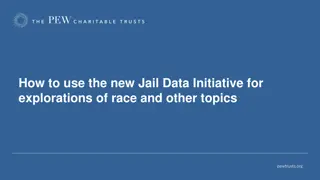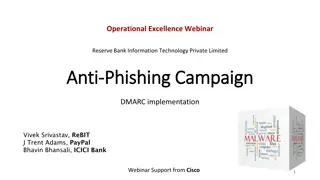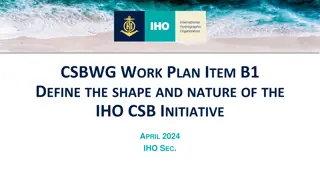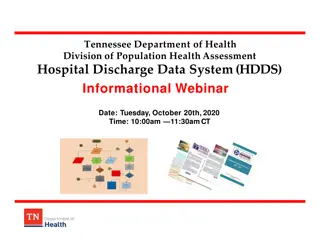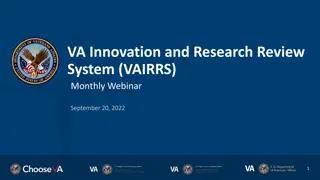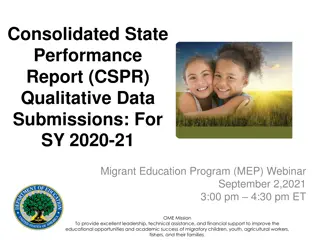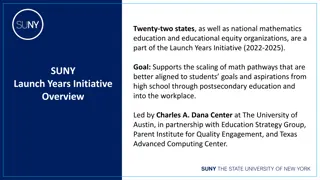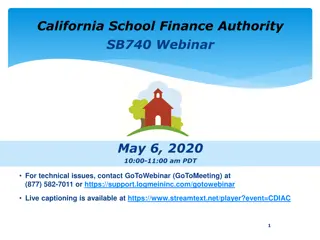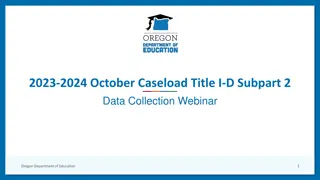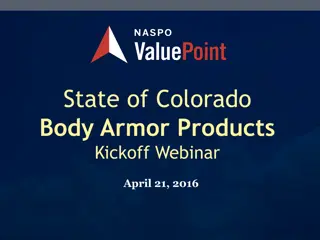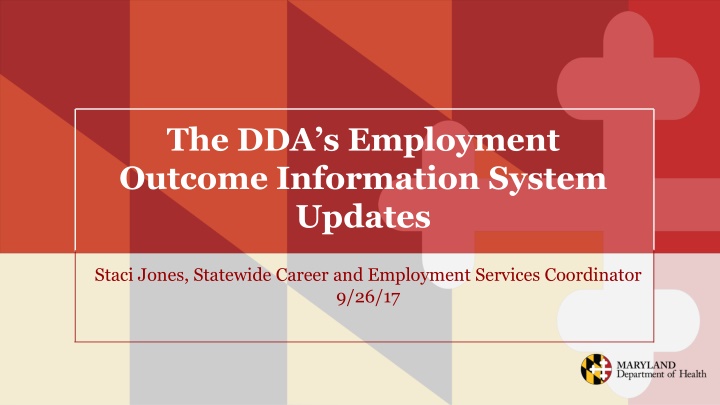
DDA Employment Outcome Information System Updates and Changes in October
"Explore the DDA Employment Outcome Information System, designed to enhance Maryland's employment services. Learn about the importance of the data, suggested applications, and upcoming changes in October, including a refined definition of Community-Based Non-Work hours. Visit to navigate the site together." (309 characters)
Download Presentation

Please find below an Image/Link to download the presentation.
The content on the website is provided AS IS for your information and personal use only. It may not be sold, licensed, or shared on other websites without obtaining consent from the author. If you encounter any issues during the download, it is possible that the publisher has removed the file from their server.
You are allowed to download the files provided on this website for personal or commercial use, subject to the condition that they are used lawfully. All files are the property of their respective owners.
The content on the website is provided AS IS for your information and personal use only. It may not be sold, licensed, or shared on other websites without obtaining consent from the author.
E N D
Presentation Transcript
The DDAs Employment Outcome Information System Updates Staci Jones, Statewide Career and Employment Services Coordinator 9/26/17
Employment Outcome Information System Established in 2013 and designed to: Help DDA and its community of stakeholders to develop the supports and infrastructure necessary to fulfill the vision and goals of Maryland s Position Statement on Employment Services, Provide longitudinal data that support Maryland s goals to improve both participation in integrated employment and the quality of employment outcomes.
Employment Outcome Information System Providers report on each person who receives DDA funded Employment and/or Day services (Supported Employment, Community Learning Services, Employment Discovery and Customization or Day Habilitation) twice a year using a secure web- based reporting tool. Executive Directors, or their designees, receive sign-in information to access the web-based tool. When the system user signs in, there is a pre-population list of individuals who receive services based on DDA records. Individuals can be added or deleted based on changes in caseloads that are not reflected in the list. Typically, reporting occurs in October and May of each year. Providers may choose which 2 week period to report on within the target month.
Why is this data important? Suggested Applications for StateData.info Users Policymakers can measure the impact of legislation changes, draw comparisons between states and the national average, and use data to effect policy change. Researchers and academics can perform rapid analyses online or download spreadsheets to study the data. Advocates can track their state s progress and create graphics to influence decision-makers. State agency staff can respond rapidly to information requests and support program monitoring, reporting, and analysis. Employment providers can identify benchmarks to support organizational goals and performance improvement.
Lets navigate the site together www.statedata.info/mdda
What is changing in October? More clearly defined definition of Community-Based Non-Work Requirement to record number of hours spent in Community- Based Non-Work 1
Community-Based Non-Work Defined Definition for the purposes of this data collection: Unpaid time spent in integrated, community settings; in a group of 4 people with disabilities or less, while having access to others without disabilities who are not paid staff or family members. Activities occur at locations available to and by members of the general community, and include interactions with members of the general community to the same extent as participants without disabilities. 1
Why define Community-Based Non-Work? Community-Based Non-Work services and supports should be designed to promote the full integration and inclusion of individuals with disabilities into mainstream society Just being out of the building isn t enough Group outings are not conducive to full community membership and inclusion A clearer definition helps providers focus on desired outcomes
Things to keep in mind 2 groups (or more) of 1:4 ratio is NOT considered Community- Based Non-Work for the purposes of this data. In other words, just creating smaller staffing ratios, but still supporting people in larger groups does not meet the definition People can still be supported in larger groups, it just does not fit the definition for THIS particular piece of data
Why record number of hours spent? Previously, DDA only required that a provider record if a person took part in community-based non-work in a two week period This means, there was no differentiation between someone that was in the community 1 hour in a 2 week period and a person that spend 30 hours engaged community There also was no differentiation between someone on a large group outing, versus a person receiving an individualized service focused on building community membership It s important to have individual baseline data
Why is this specific data so important? Good baseline data for each provider to aid in organizational transformation and/or individual person centered planning Drill-down data as the state progresses toward CMS Final Rule compliance A better understanding about how people are supported when they are NOT working A better understanding about WHY someone isn t spending time in integrated community settings (i.e. organizational or individual barriers)
How was this definition developed? National best practices in Community-Based Non-Work for people with disabilities Through work with: National Association of State Directors of Developmental Disabilities Services (NASDDDS) State Employment Leadership Network Office of Disability Employment Policy s Employment State Leadership Mentor Program (ODEP EFSLMP) HCBS Final Rule requirements
What if a person we support spends time in the community but, we don t think it meets this definition? Some common ways to support someone who may be resistant to leaving a day program to spend time in integrated settings: Allow the person to choose the activities, based on person-centered Discovery Allow the person to choose the others that will also be participating Get a long-term and/or favorite day program staff involved in providing support to the person in new community settings Using person-centered planning, figure out a schedule that meets the person s needs Using person-centered planning, spend time figuring out the qualities that community settings need to have for the person to feel comfortable (i.e. does the person prefer quiet, low-traffic areas? does the person prefer predictability and structure?, does the person need the ability to leave a setting when he/she becomes over stimulated?)
What if I have technical questions about the data system? Find in-depth instructions here: https://www.statedata.info/mdda/MDDA_Data_Instructions_2017.pdf Access FAQ by going to https://www.statedata.info/mdda/Maryland_DDA_FAQ_2016.pdf Access DDA s Employment First Page https://dda.health.maryland.gov/Pages/employment.aspx For technical questions about the system email: o Primary contact: John Shepard (ICI Umass Boston) John.Shepard@umb.edu o Secondary contact: Agnes Zalewska (ICI Umass Boston) Agnes.Zalewska@umb.edu Other questions or problems email: Staci Jones Statewide Career and Employment Services Coordinator Developmental Disabilities Administration Staci.Jones@maryland.gov
Other helpful resources Ensuring Excellence in Community Based Day Supports http://employmentfirstma.org/files/DDS_CBDS_web_F.pdf Connecting People with Disabilities and Community Members https://ici.umn.edu/products/docs/Friends_manual.pdf The Lead Center http://www.leadcenter.org/customized-employment/discovery Tools for Charting the Life Course http://www.lifecoursetools.com/principles/integrated-supports/

